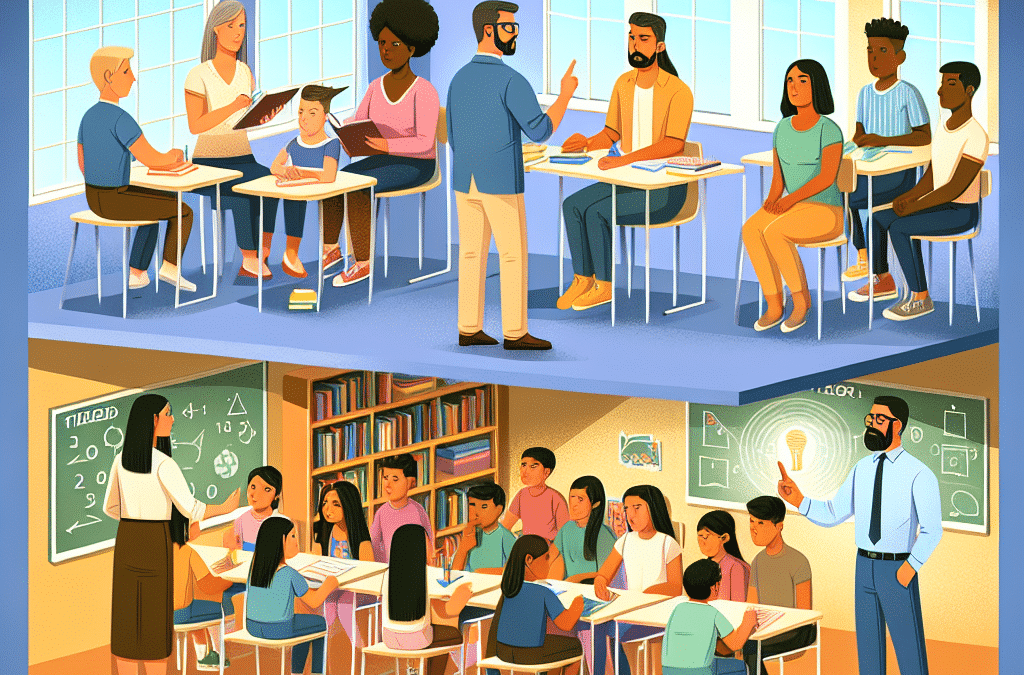RTI and Speech Therapy: A Practical Guide for Speech Therapists and Speech Therapy Assistants
Introduction
I am delighted to see your interest in the Response to Intervention (RTI) model and its application in speech therapy. As a speech therapist specializing in multilingualism and dynamic assessment, my goal is to provide you with practical tools and research-based training to help you overcome the challenges encountered in your professional practice.
What is Response to Intervention (RTI)?
RTI is a proactive approach that allows for continuous and adaptable responses to the individual needs of children with language or reading difficulties. This multi-tiered model provides optimal support, particularly in a school environment.
Levels of Support
- Tier 1: High-quality classroom instruction for all students.
- Tier 2: Targeted interventions for children who do not make sufficient progress with basic instruction.
- Tier 3: Intensive and individualized interventions for students with complex needs.
Direct and Indirect Interventions
Direct interventions, such as dynamic assessment, involve active interaction with the child. As a speech therapist, you will revisit concepts discussed in class to explicitly teach, model behaviors, guide the child’s independent practice, and provide constructive feedback. This documentation will help you understand how the child learns and identify the most effective supports for them.
Indirect interventions include recommendations to teachers to support students in their learning. This can involve the early implementation of support measures, teacher training, or preparing children for assessments.
RTI vs. Dynamic Assessment
Distinguishing RTI from dynamic assessment (DA) is essential for you as a speech therapist. While RTI is a systematic framework applied over the long term for a group of students, DA focuses on individual learning capacities over a short period. This distinction is crucial for adapting your practices and effectively meeting the varied needs of your young clients.
Practical Implementation Example
Imagine you receive a referral for speech therapy. The first step in RTI would be to gather comprehensive information about the student, including their school history and language skills. Next, in collaboration with teachers and parents, you can integrate appropriate direct and indirect interventions tailored to the student’s progress.
Case Study: Supporting a Multilingual Learner in Elementary School
Background:
- Sarah, a 9-year-old second language learner, is struggling with reading comprehension and vocabulary development.
Tier 1:
- High-quality classroom instruction with differentiated supports.
- Classroom activities include visual aids and peer-assisted learning.
Tier 2:
- Small group interventions focus on vocabulary building and reading comprehension strategies.
- Weekly progress monitoring using vocabulary quizzes and comprehension assessments.
Tier 3:
- One-on-one intensive sessions with the SLP, focusing on advanced vocabulary, sentence structure, and oral language skills.
- Implementation of a tailored intervention plan involving multi-sensory techniques and bilingual supports.
- Monthly collaborative meetings with teachers and parents to review progress and adjust interventions.
Outcomes:
- After 12 weeks, Sarah shows significant improvement in vocabulary and comprehension scores.
- Transition plan developed for continuing support with a focus on maintaining gains through regular monitoring.
Discover My Training Programs
RTI revolutionizes our approach to supporting the learning of bilingual and multilingual children by promoting constant and personalized adaptation. This method allows speech therapists to effectively contribute to the academic success of children.
To deepen your knowledge and master various intervention techniques adapted to bilingual children, I invite you to discover my training programs. They are designed for you—speech therapists, special educators, teachers, and language stimulation practitioners—to provide practical tools based on evidence.
Don’t wait to enrich your practices and offer quality support to your multilingual students and clients. Click here to access my training for speech therapists, or here for my training for special educators or language stimulation practitioners.
You can also listen to the podcast of my colleague speech therapist Lorianne Lacerte on this topic with guest Pascal Lebvre here.



